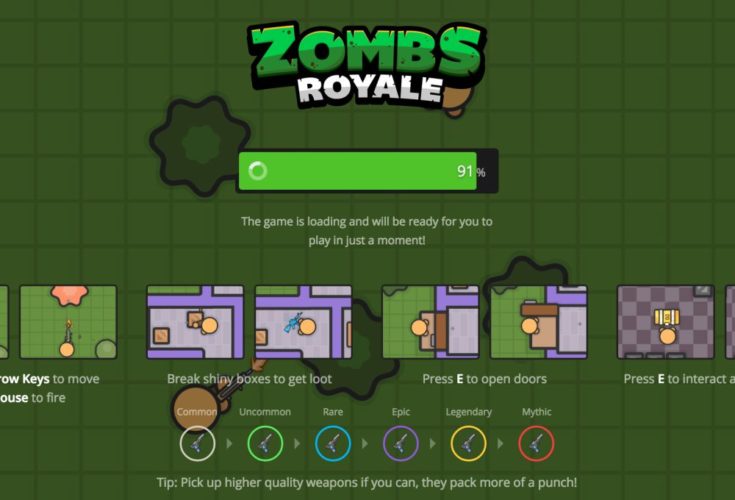Browser Games
Elder Ring: The One Guide to Rule Them All

Elden Ring is a massive, over-the-top nightmare of a game. Its majestic landscapes and brutal boss encounters weave a world of wonder and terror, humbling even the most hardened Dark Souls veteran. In this Elden Ring overview, we review the game’s mechanics, world exploration, and complex story to get you started. As a bonus, we’ll include several tips and tricks to trivialize boss encounters and optimize your playthrough.
Story
Our quest follows the shattering of the Elden Ring, an entity capable of reshaping laws regarding life, death, and power. Following the ring’s destruction at the hands of a grief-fuelled monarch, the lords and ladies of Elden Ring’s world vie over reforging the Elden Ring in their own image. The civil war plunges the continent into utter ruin, with no victor emerging from the chaos. As a last-ditch contingent to satisfy the whims of an eldritch force, we appear as the ones destined to reforge the Elden Ring and determine the world’s fate.
Combat Mechanics
- Playstyle and Stats – Elden Ring has various playstyles, from your typical knight to samurai battle mages to bandit bleed builds. However, most playstyles demand investing your stats into class-specific stats. For example, samurais scale off dexterity and strength, mages off intelligence and mind, and knights off strength and endurance. You’re better off specializing in a specific playstyle and pouring your runes into three or four stats.
- Weapons and Scaling – The primary channel of diplomatic communication between you and your foes, weapons in Elden Ring come in a wide variety of melee and ranged forms. Swords, staffs, warhammers, and bows offer a deadly retort to even the most unstoppable foe. Most weapons scale with a specific stat, so be sure to examine a weapon’s information to learn how to increase its damage through your stats.
- Weapon Art – Almost every weapon in Elden Ring comes equipped with a weapon art that performs a special move to deal extra damage. While some of these arts are rather typical (i.e. roar to slightly increase your damage or perform a riposte), others perform a midair ground slam or jet a wave of black flame. However, these arts require fp, so ensure you have enough fp on hand or a few cerulean flasks if you intend to use them.
Specialized Combat Mechanics
- Regular Weapons – Common, customizable, and easy to upgrade, regular weapons are the most accessible weapons to find and use in Elden Ring. While finding these weapons is no challenge, modifying and upgrading them to their peak takes more time and resources than unique weapons. The mines containing the smithing stones necessary for their empowerment appear as burnt holes on your map.
- Legendary Weapons – Rare, powerful, and challenging to upgrade, legendary weapons are a more powerful variant of weapons in Elden Ring. Acquiring these weapons generally requires using a boss soul, surviving a dangerous gauntlet, or beating a demanding boss. Upgrading these weapons, while quicker and less costly than regular weapons, requires somber smithing stones, which are much more challenging to acquire.
- Status Effects – Some Elden Ring weapons have a special status effect that can bleed, rot, or poison your foes. Bleeding takes away a large portion of your foe’s hp if you’ve dealt enough hits, poison deals a large portion of damage over time, and scarlet rot deals an even more significant amount of damage over time. Other ailments like frostbite and fire increase a foe’s susceptibility or break their poise.
- Great Runes – Great Runes are powerful buffs that last until you die. They can increase your stats, health, stamina, and much more. Earning a Great Rune requires defeating the main boss specific to a region, activating the nearby tower, and using a rare rune shard.
Survival Mechanics
- Flask of Crimson/Cerulean tears – Crimson and cerulean tears flasks function as reusable healing items and fp banks for your character. To increase your amount of flask charges, pick up golden seeds from small golden trees. To increase their potency, acquire sacred tears from the churches of Marika found throughout.
- Armor – Equipping more formidable armor is a viable way to endure foes’ hits and prevent you from getting staggered. However, more protective armor requires a higher equip load, so ensure you’ve invested enough points in endurance. Also, some armor pieces increase specific stats, so keep a look out for your armor’s descriptions if you want to synergize your set with your playstyle.
- Talismans – Serving to modify your health, damage, or resistance, equipped talismans are excellent tools for survival. These equipables come in various forms and can even increase your damage taken at the cost of one of your stats. While you only start with one Talisman slot, defeating a significant story boss will grant you another slot.
Exploration
- Grace – These small resting spots regenerate and upgrade your flasks, restore your health and fp, enable teleportation, and can guide you to your next objective. If several golden particles appear nearby, look for a golden flame to find a site of grace.
- Torrent – A magical horse with no fear and a midair jump, Torrent is a fierce steed that allows rapid exploration of the world of Elden Ring. We acquire Torrent by speaking with Melania at the Stormfront Castle grace.
- Map – Enabling you to plan your path carefully through the treacherous world, using your map is an essential part of exploring Elden Ring. To increase your map, travel along roads, and look for a small shrine with a new piece of your map.
Multiplayer
- Summons – Summoning others is a great way to take down challenging bosses. Using a relatively common furlcalling finger remedy enables you to summon others. Alternatively, allowing yourself to be summoned with a tarnished furled finger grants you runes and a ring arc if you succeed in defeating your patron’s boss. Using spirit Summons is another option for player summoning that summons bots to help you instead of other players.
- Invading – Placing down a duelist furled finger or using a festering bloody finger or bloody finger enables you to invade someone’s world to steal their runes and rune shard. Bewarned, some may call for help after you invade.
- Signs – Helpful, dishonest, and hilarious, multiplayer signs are a fantastic form of communication. While they can often reveal illusionary passages or boss strategies, they also advise you “try jumping” off bottomless cliffs and perform some suspicious activities regarding “offering your pickle, horse but wholes,” and “fort night.” Upvoting a message provides that player with a small health buff, so give that extra vulgar joker a like if you enjoyed their message.
Tips and Strategies:
- Go South, then North, then East – If ever an area feels too challenging, you’re probably not supposed to be there yet. Going South offers an easier transition into the brutal world of Elden Ring and several golden seeds and sacred tears for your trouble.
- Vast Underground – Beneath Elden Ring lies a whole other world! Look for large wells in Limegrave and Liurnia to access these magical areas with glowing ceilings and lovely architecture. These areas can also serve as alternate areas to progress the story of Elden Ring.
- Look for Councilor Iji – Behind an Illusionary wall upon the path to Caria manor in Liurnia rests a peaceful troll selling several somber smithing stones. Purchasing and smithing these stones is an excellent way to grow overpowered early. Just make sure you come to Iji with enough runes; these stones aren’t cheap.
Conclusion
That covers the essential mechanics, combat, and exploration of Elden Ring. Despite its sheer difficulty, you’re now equipped to take on anything the game has to throw at you. So gather your ambition and grab a trusty sword, the Elden Ring awaits!
The One Guide to Rule Them All
Browser Games
Fastest Way to Get Money in Blox Fruits
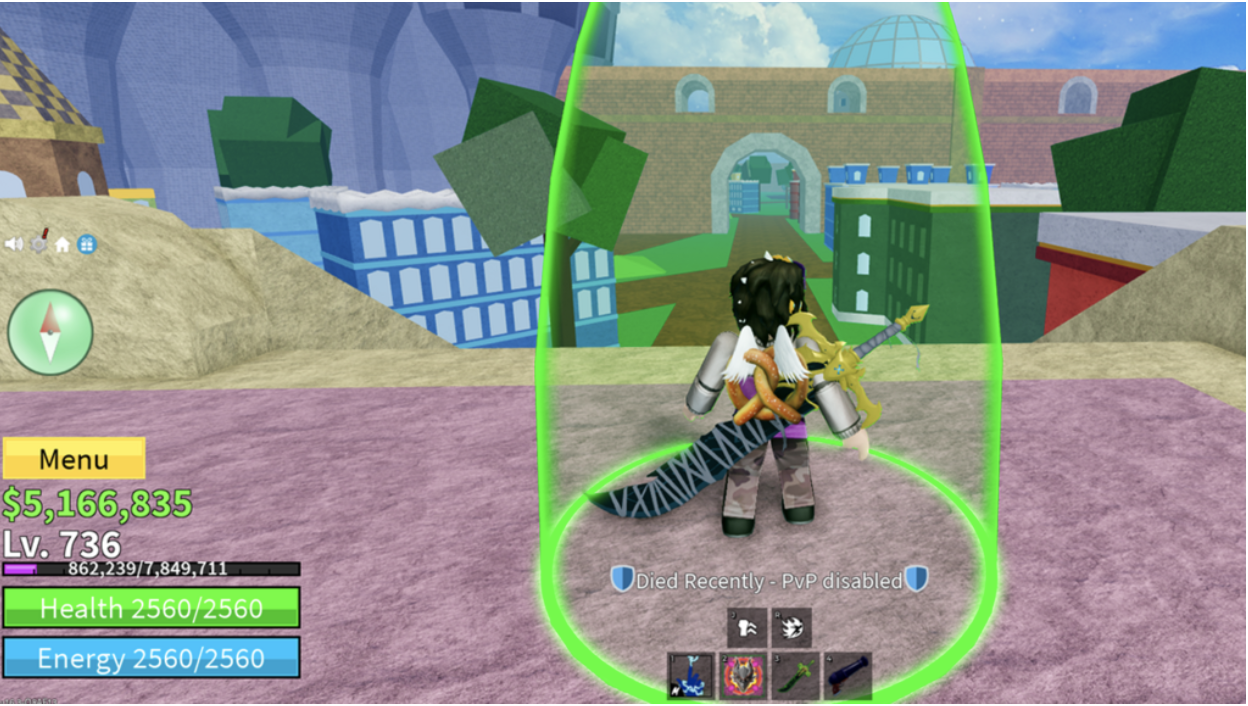
Money is one of three primary currencies in Blox Fruits. It lets players purchase items like Fighting Styles, Swords, Guns, Blox Fruits, Accessories, Abilities, and Raid Chips. While the prices are high, Money is the most accessible currency in the game, players can earn it quickly through straightforward methods.
Players can hold up to $1,000,000,000, giving them substantial purchasing power. In this guide, we’ll reveal the fastest ways to maximize your Money earnings in Blox Fruits, helping you afford the upgrades you need.

How to Get Money Fast in Blox Fruits
Blox Fruits offers multiple ways to earn money. Each method has its advantages, whether you’re looking for steady income or quick cash injections.
Money can be earned through:
- Purchasing with Robux
- Game Passes
- Defeating Enemies & Bosses
- Redeeming codes
- Quests
Let’s break down each method to help you choose the best approach for your gameplay style and goals.

Purchasing With Robux
Buying Money with Robux offers instant access to the exact amount you need. Players can purchase:
- 30,000 Money (50 Robux)
- 150,000 Money (200 Robux)
- 405,000 Money (499 Robux)
- 900,000 Money (999 Robux)
- 1,500,000 Money (Best value at 1,499 Robux)
While 1,499 Robux may seem steep, many players choose this route for its immediacy and guaranteed results. Some even buy Robux specifically to acquire their target Money amount, skipping the grind of other earning methods.
To purchase Money in-game, open Menu, select “Shop,” scroll to ($) Money, and choose your amount. Alternatively, visit Blox Fruits on Roblox’s website, click “Subscriptions & Passes,” and buy your desired game pass without launching the game.

Game Passes – 2x Money
The 2x Money game pass doubles all Money earned from NPCs and Quests. It doesn’t affect chest rewards but maximizes earnings for players focused on combat and mission grinding.
This pass pairs well with questing strategies and NPC farming, making it a powerful tool for efficient Money earning. Players looking to earn money fast through active gameplay will find this especially valuable.

Defeating Enemies & Bosses
Enemies (NPCs) spawn in groups across different areas, providing steady Money drops when defeated. While regular enemies offer little rewards, bosses offer substantially higher Money and EXP.
Sea 1 introduces starter bosses like Gorilla King and Yeti, while Sea 3 features powerful ones like Stone and Hell’s Messenger. Your earnings scale with boss difficulty.
It is always recommended to equip strong fruits like Dragon or Kitsune for Boss farming. These premium fruits maximize your damage output and survival, leading to faster kills and more Money.

Redeeming Codes
Codes offer a simple path to free Money, though they require patience and timing. Developers give them away through social media, Discord servers, and in-game notifications.
To redeem simply click the gift icon on the left side of your screen and enter your code. While most codes grant EXP multipliers, some provide direct Money rewards. Check official channels regularly for new code releases.
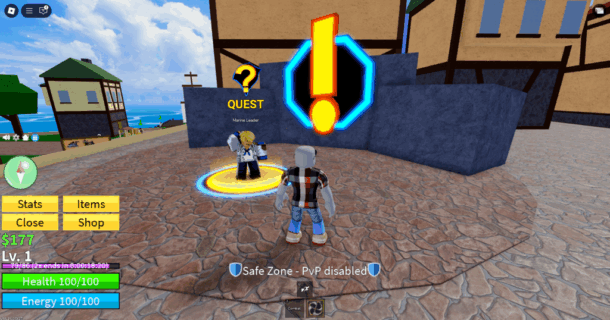
Quests
Quests provide steady Money while advancing your character. They scale in difficulty and reward as you progress. Each quest has a level requirement you must meet before accepting. Early quests might ask you to defeat a few NPCs for hundreds of Money. Later quests demand more challenging tasks but pay thousands. This makes questing an efficient way to earn while naturally leveling up.
Final Words
Money is your progression in Blox Fruits. Whether you choose to purchase it with Robux, farm bosses, complete quests, use codes, or combine multiple methods, consistent effort pays off. Pick the strategy that matches your playstyle and resources, then stick to it. The path to earning money is clear, you just need to choose your method.
Browser Games
Fallout Shelter Cheats & Cheat Codes for iOS, Android
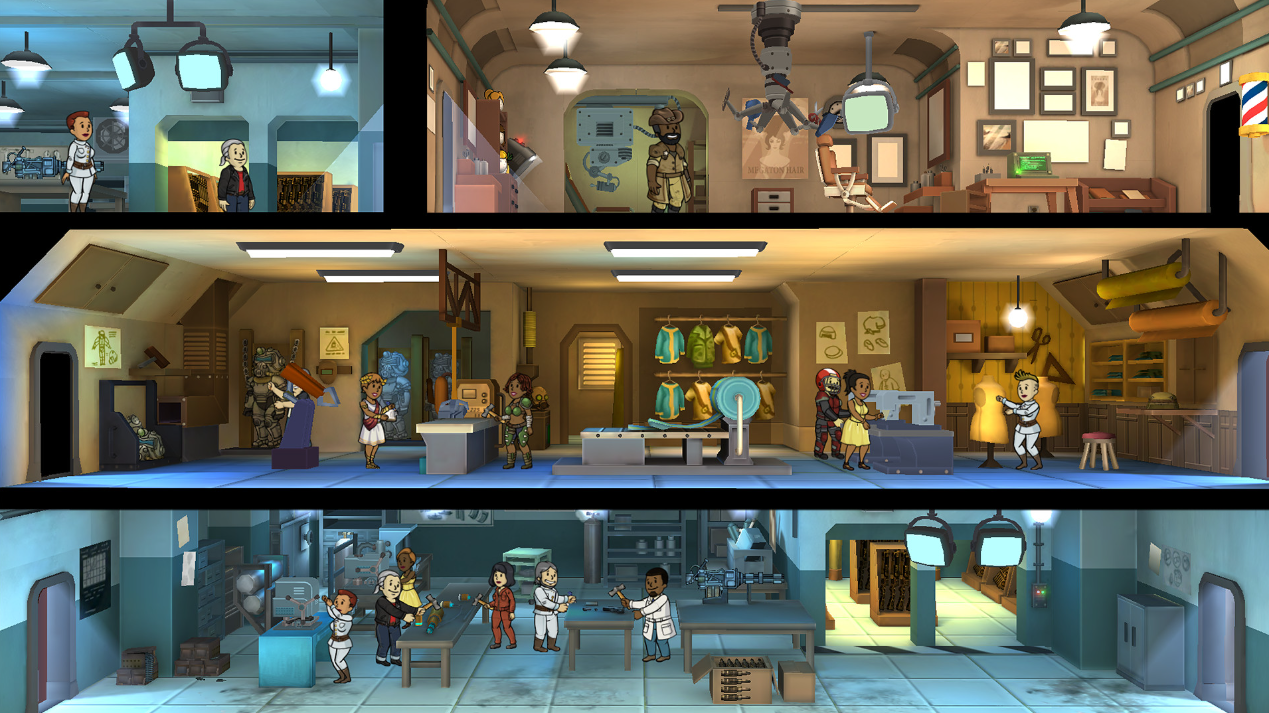
Key Takeaways
- Fallout Shelter doesn’t have official cheat codes, but players use tricks like the time-lapse method and glitches to progress faster.
- Risks include glitches, corrupted saves, and device security issues when using hacks or mods.
- Smart resource management, stat training, and daily objectives are safer, long-term strategies for success.
- Sending dwellers into the wasteland and upgrading rooms provides steady growth without risks.
- Cheats may offer quick wins, but they can reduce the fun of Fallout Shelter’s strategy-based gameplay.
Introduction
Fallout Shelter looks pretty straightforward at first glance, but it is a game of serious strategy, patience, and a lot of time. And well, cheats, codes, and clever tricks give you an advantage. So, here’s everything you need to know to unlock those hidden perks on both the iOS and Android versions of the game!
Here’s A Short Overview Of The Fallout Shelter Gameplay
Fallout Shelter is a free-to-play simulation game that lets you take the reins in building and manage your very own underground Vault in the Fallout universe. As the Overseer, your primary role is to guide your dwellers, assign them jobs, and expand the rooms to ensure everyone survives in a post-apocalyptic wasteland. The game beautifully combines strategy and resource management, challenging you to juggle food, water, and power while keeping your dwellers happy and productive. Each dweller has their own unique S.P.E.C.I.A.L. stats, which affect how well they perform in various tasks, like strength for power rooms and agility for diners.
But it’s not just about survival; you’ll also face external threats like raider attacks, fires, and pesky radroach infestations. Sending your dwellers out into the wasteland opens up opportunities to find weapons, outfits, and caps, adding an exciting layer to your progression.
Do Cheats And Cheat Codes Really Exist In Fallout Shelter?
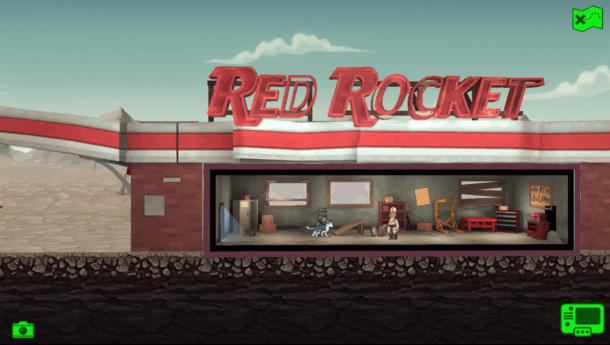
A lot of players are curious if Fallout Shelter has any official cheat codes like the classic games used to, but the short answer is no. Bethesda hasn’t added any built-in cheat codes for the iOS or Android versions. That said, players have found some clever workarounds and exploits that serve as “cheats.”
One of the most popular tricks is the time-lapse method, where you can speed up resource collection, training, and even pregnancies by adjusting your device’s clock. Plus, there are mods and save editors available on Android or through emulators that can give you unlimited resources, although they do come with their own set of risks. So, while there aren’t any official cheats, there are definitely ways to tweak the game for quicker vault progress.
Best Fallout Shelter Cheats & Exploits For iOS And Android
Time-Lapse Cheat
One of the most well-known tricks is to adjust your device’s system clock. By speeding up time, you can instantly finish tasks like generating resources, training, and even having babies. Just make sure to set your clock back afterward to prevent any glitches.
Unlimited Caps & Resources Glitch
In earlier game versions, if you kept rushing production rooms, you could score massive amounts of caps and resources, especially when paired with the time-lapse method. Although recent updates have made this less effective, some players still manage to use it to quickly gather resources.
Faster Dwellers And Baby Production
Put your high-charisma dwellers in the living quarters and use the time-lapse trick to accelerate baby births. This way, you can boost your vault’s population without having to wait for hours in real-time.
Lunchboxes Without Spending Money
By completing daily objectives and taking advantage of time skips, players can rack up lunchboxes more quickly, unlocking rare weapons, outfits, and caps that would typically require real cash.
Some Tips To Maximize Resources Without Cheats
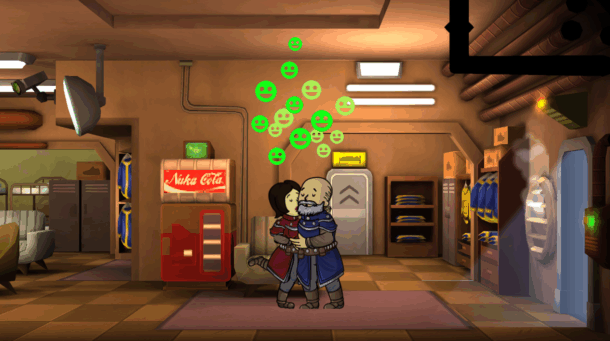
To get started, place your dwellers in rooms that align with their strongest S.P.E.C.I.A.L. stats. For instance, those with high Strength should be in power generators, while Perception is best suited for water treatment, and Agility shines in diners. This strategy not boosts efficiency but also minimizes the risk of failed rushes. Be cautious about expanding your vault too quickly, as larger spaces can drain your resources at a faster rate. Instead, prioritize upgrading your current rooms before adding new ones.
Training your dwellers in the Fitness Room, Armory, and other facilities will gradually enhance their stats. This will lead you to better productivity in the long run. Don’t forget to equip them with outfits and weapons, as this will improve their performance and bolster defenses against raiders or radroaches. And remember to send your dwellers out into the wasteland. And exploring can yield rare weapons, outfits, and caps that will strengthen your vault.
Lastly, make sure to complete daily objectives and quests for extra rewards like lunchboxes and caps. The key to success is balancing your vault’s population with the resources you have.
Are There Any Risks Of Using Cheats And Hacks?
When you mess with the game’s system clock using a time-lapse cheat, you might run into some pretty annoying glitches. Players frequently mention issues like resource timers going haywire, dwellers refusing to finish their tasks, or objectives resetting in strange ways. These bugs can disrupt the game’s natural flow and turn progress into a frustrating experience.
Using save editors, APK mods, or jailbroken iOS tweaks can bring even bigger headaches. Sure, they might give you instant access to unlimited caps, Nuka-Cola Quantum, or legendary gear, but they also run the risk of corrupting your save files. Once that happens, getting your save back can be a real challenge, and you could end up losing hours of hard work. Plus, some mods are flagged as unsafe, which could put your device at risk for malware
Another thing people often overlook is how cheating can take away the fun. Fallout Shelter was meant to be a slow-burn strategy game. If you lean too much on cheats, you might find that the challenge disappears, leaving the experience feeling a bit hollow over time.
While Bethesda doesn’t actively ban players for cheating in Fallout Shelter, the risks of data loss and device instability make using hacks a bit of a gamble.
Some Legit Alternatives To Cheats: Proven Strategies
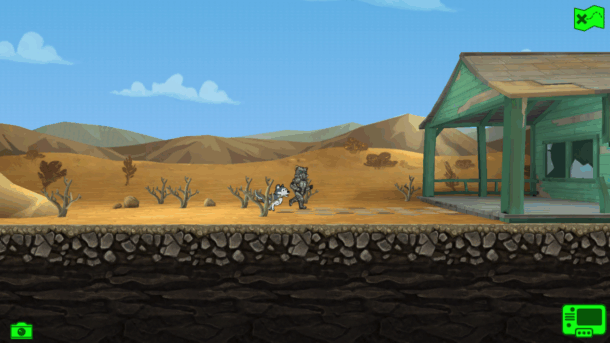
The best way to get the most out of your dwellers is by fine-tuning their S.P.E.C.I.A.L. stats and placing them in the right rooms. Instead of rushing to expand, consider upgrading and merging your rooms first; it’s a smarter move that saves space and enhances production.
Don’t underestimate the value of daily objectives and quests, they can net you caps, lunchboxes, or even rare items without dipping into your wallet. Plus, sending your dwellers out into the wasteland is a tried-and-true strategy. With the right gear and some Stimpaks, they can return with legendary weapons, outfits, and valuable resources.
Conclusion
To make your experience more enjoyable, consider using smart strategies such as managing resources effectively, training your dwellers, and tackling quests will help. These approaches can help you make steady progress without facing unnecessary risks.
Browser Games
How to Make Jedi in Little Alchemy

Little Alchemy is a crafting game that is widely appreciated for its base idea of unlocking new items by combining elements. The best part is, you never know what works with what, which sometimes leads to wonderful surprises, and no game has as many creative items as Little Alchemy, one of the most interesting ones is the star of the game, the Jedi. The Jedi is a global icon of the Star Wars franchise, a symbol of courage, wisdom, and the use of the Force, which makes it infamously challenging to unlock, and hence, it is one of the most awaiting items.
Unlocking the Jedi in Little Alchemy doesn’t come from endless guessing and mixing; it demands a focus on specific elements, following the essential steps, and grasping the rationale behind the unlock. This piece will guide you through all the necessary mixes, detailing the reasoning for particular elements leading to the Jedi, and share useful tips to ease your progression. For a player who enjoys the game on the side or the one who aims to unlock every item, this piece will give you the Jedi unlock creation mastery.
How to Make Jedi in Little Alchemy

To create Jedi in Little Alchemy, players must combine two specific elements:
Jedi = Human + Lightsaber
This is the only verified recipe. Once these two items are crafted and merged, the Jedi element will appear in your collection.
The process is straightforward in theory, but it requires creating the prerequisite elements first. That means you’ll need to know how to make both Human and Lightsaber before you can complete the final step.
Step 1: Creating Human
The Human element is a fundamental building block in Little Alchemy, used in countless other combinations beyond Jedi. Here’s how to make it:
- Earth + Fire = Lava
- Lava + Air = Stone
- Stone + Air = Sand
- Sand + Fire = Glass
- Glass + Sand = Time
- Earth + Water = Mud
- Mud + Plant = Swamp
- Air + Fire = Energy
- Swamp + Energy = Life
- Earth + Life = Human
Once you unlock Human, it opens up endless crafting possibilities, with Jedi being one of the most exciting outcomes.
Step 2: Creating Lightsaber
The Lightsaber is an iconic Star Wars weapon and one of the most creative items you can craft in Little Alchemy. Making it requires a few layered steps:
- Air + Fire = Energy
- Stone + Fire = Metal
- Metal + Energy = Electricity
- Metal + Electricity = Light Bulb
- Light Bulb + Sword = Lightsaber
Now that you have Lightsaber in your collection, you’re ready for the final combination.
Step 3: Combining Human and Lightsaber
The last step is simple:
Human + Lightsaber = Jedi
Congratulations – you’ve successfully crafted Jedi in Little Alchemy! This unlocks a unique item that represents one of the most recognizable figures from the Star Wars franchise.
Why Jedi Is a Special Element

The Jedi is not just another combination in Little Alchemy- it represents a crossover between pop culture and the game’s creative world. Unlike basic elements such as water or fire, Jedi is tied to a universally known symbol. That makes it fun for Star Wars fans and casual players alike. Creating Jedi also feels rewarding because it requires several steps of crafting, including essential elements like Human, Sword, and Lightsaber, each with their own mini-journeys.
Other Useful Combinations with Jedi
While Jedi itself is a final product in many players’ collections, it can also be used to unlock additional items depending on the version of the game. Here are some fun pairings:
- Jedi + Jedi = Force
- Jedi + Lightsaber = Master Jedi
- Jedi + Space = Star Wars
These results make Jedi even more rewarding, as it can unlock further items tied to the Star Wars theme.
Tips for Making Jedi Faster
- Prioritize the Basics: Human, Metal, and Energy are fundamental materials. By crafting these elements first, you create a strong foundation for efficient reuse in later recipes.
- Apply Reasoning: In the real world, many mixtures require some form of logic. As a case in point, the combination of Metal and Electricity results in a Light Bulb, which in turn logically connects to a Lightsaber.
- Try Different Things: This guide explains exactly how to make Jedi, but the essence of Little Alchemy lies in trying to make different mixtures. While attempting to uncover the recipe for Jedi, you might find some other.
- Monitor Your Progress: Consider jotting down notes or taking advantage of in-game clues when you find yourself at a dead end. Keeping track of your work is beneficial, especially as managing the steps correctly is essential for Jedi.
Why Players Appreciate Discovering Jedi
The excitement experienced while attempting to create the Jedi item is not exclusively related to the game itself. Its creation is tied to the Star Wars franchise, which makes discovery even more special. For a great number of users, Little Alchemy is fun because it allows them to merge elements of game engagement while also watching movies, and this particular item brings them a real feeling of achievement. It is yet another example of Little Alchemy’s innovation wherein it incorporates aspects of pop culture into the game.
Discovering the item Jedi truly reveals the essence of the game Little Alchemy – making complex combinations from simple things that make players joyful and amazed.
Conclusion
In Little Alchemy, one of the most thrilling crafting adventures is making a Jedi and not just because of combining a few elements. Every step of this is like patiently and excitingly putting together a piece of pop culture. It begins with basics like Humans and Lightsabers, the creations of numerous simpler discoveries such as Lava, Energy, Metal, and Sword. When several layers like these culminate in the combination of Human and Lightsaber to finally get the coveted Jedi, it is deeply satisfying.
The process hints at a wider puzzle – emblematic of challenges in the game that foster ingenuity, and of the subtle cross-cultural references the game incorporates. Exploring the recipe and the steps required to take them not only boosts your performance but lets you enjoy the thoughtful little details that make Little Alchemy so delightful. If you’re a Star Wars nerd or just a keen player with collection completion in mind, crafting the Jedi is a milestone. Equip your elements, start blending, and captain your way in Little Alchemy with the Force!
-

 Guides6 years ago
Guides6 years ago6 Proven Ways to Get more Instagram Likes on your Business Account
-
Mainstream11 years ago
BioWare: Mass Effect 4 to Benefit From Dropping Last-Gen, Will Not Share Template With Dragon Age: Inquisition
-

 Mainstream7 years ago
Mainstream7 years agoHow to Buy Property & Safe Houses in GTA 5 (Grand Theft Auto 5)
-

 Guides1 year ago
Guides1 year agoFree Fire vs PUBG: Comparing Graphics, Gameplay, and More
-

 Casual2 years ago
Casual2 years ago8 Ways to Fix Over-Extrusion and Under-Extrusion in 3D Printing
-

 Guides10 months ago
Guides10 months ago50+ Free Fire ID and Passwords Login List (Giveaway) 2025
-
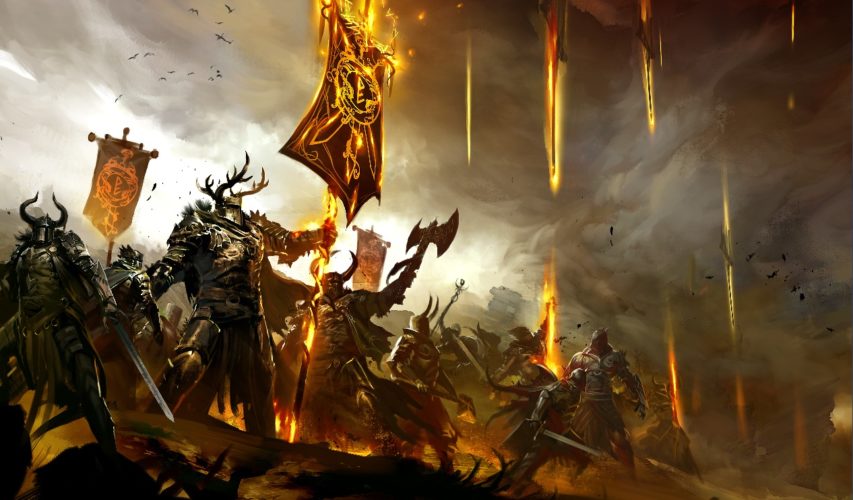
 Mainstream13 years ago
Mainstream13 years agoGuild Wars 2: The eSports Dream and the sPvP Tragedy
-

 Other2 years ago
Other2 years agoAjjubhai UID: Free Fire Details & Earnings

